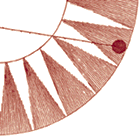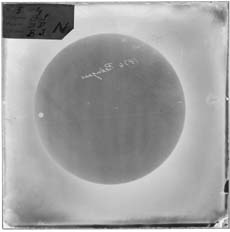After the 18th century there were further transits in 1874 and 1882, none in the 20th century, and now another pair in 2004 and 2012.
.The 19th-century transits offered an opportunity to improve on the previous results. As well as traditional methods, there were now new technologies available. Photography held out the promise of producing permanent images which could be analysed after the event, while telegraphy was used to determine longitude.
.More nations joined in the enterprise. But despite government funding and international discussion the results were again considered by many to be disappointing.
.The current value of the Earth-Sun distance is based on radar measurements, with a precision and accuracy undreamt of by earlier investigators.
.The attraction of the transits in 2004 and 2012 lies primarily in their rarity and in their historical significance.






 The Transit Method
The Transit Method Transits in Print
Transits in Print Staging the Transit
Staging the Transit A Commercial and
A Commercial and  Transit Geography
Transit Geography Timing the Transits
Timing the Transits Viewing the Transits
Viewing the Transits Transit Places
Transit Places Oxford Observations
Oxford Observations Results
Results